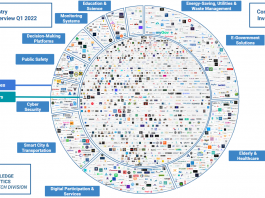
As the COVID-19 pandemic continues to disrupt lives everywhere, the operating environment today is more volatile than ever. Repeated waves of infection, new virus variants, ever-evolving government lockdown regulations, an unsteady supply chain, cash flow concerns, market declines and work disruption have become the grim reality for the average medium business.
Companies that have clear, real-time insight into their financial situation are best positioned to adapt to the rapidly changing environment. A no-brainer for finance teams is the fact that accurate budgets and forecasts will enable organisations to respond more efficiently and develop contingency plans to serve them well when the unexpected strikes.
Here are three things you can do today to better navigate these turbulent times.
1. Become more agile with budgeting
Budgeting during a pandemic is hard. The course of the virus remains uncertain, customer responses are difficult to predict, and government protocols change from one month to the next or even weekly. For this reason, it’s wise to review your latest budget versus actual performance more frequently than you did before – perhaps as often as every week or fortnight.
This exercise will enable you to better understand variances across your most crucial revenue and expense accounts. You’ll be forewarned if you’re facing a profit shock because demand has declined or key input costs have climbed. The info will help you take actions, such as seeking credit, ramping up investment or cutting costs.
2. Correct course
While we can’t predict the future, we can make educated guesses about what outcomes our decisions will lead to. Begin by looking at critical accounts and diving into the details to gain insight into which areas are most at risk. Using this information, create ‘what if’ scenarios and test the potential impact of a set of assumptions.
Here is an extreme example of a ‘what if’ scenario: your chain of restaurants has not fully recovered from the curfew and alcohol ban in place during the second wave of the pandemic over December. Dine-in consumers are not returning and you’re concerned you don’t have the cash to survive stricter lockdown measures in the event of a third wave. However, your takeaway business is doing relatively well.
You could simulate a scenario where you operate as a ‘dark kitchen’ or ‘delivery-only’ restaurant. How much would you save by downsizing your premises and rationalising your menu? Would that be more profitable than running an empty restaurant where you count on alcohol margins to make money?
With a thorough understanding of the underlying numbers and potential impact, such decisions can be made with far greater certainty.
3. Follow-through
Once you commit to changes based on your scenario planning exercise, new financial forecasts are needed to ensure strong execution on those changes. Update your forecast on a rolling schedule consistent with the budget. Then, adjust financial projections for the key areas within your business such as sales or cash flow. No longer will it be adequate to re-forecast only on a quarterly or monthly basis. You may need the flexibility to re-forecast on a weekly basis for the near term.
Rolling forecasts can significantly augment your existing budget and planning process. You can easily monitor progress against key performance indicators, make sound financial decisions, and even give the bottom-line a much-needed boost. This is supported by recent research which shows that companies using rolling forecasts achieve greater budget accuracy while spending less time on the process and increase their profitability by 10%.
4. Weather the storm
Taking the right steps today can help your business weather the storm and accelerate once the turbulence has passed. A proactive approach when it comes to budget and planning, including monitoring your budget, performing scenario analysis, and implementing rolling forecasts can help you get back to business as usual when the present disruption has receded.













